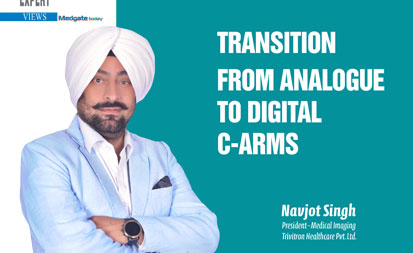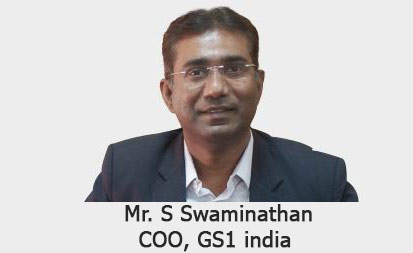Building a ‘Self-Reliant’ Healthcare Model
In his last address, Prime Minister Narendra Modi expressed that the biggest lesson from the outbreak of the global pandemic, is that India must become a self-reliant nation. Remarkably, his idea of selfreliance is not

In his last address, Prime Minister Narendra Modi expressed that the biggest lesson from the outbreak of the global pandemic, is that India must become a self-reliant nation. Remarkably, his idea of selfreliance is not related only to the Indian economy vis-à-vis rest of the world. As per him, every region must be self-reliant when it comes to basics of life – food, health, livelihood, so that the impact of crisis like COVID-19 can be mitigated in the future.
The COVID -19 pandemic has brought the focus on healthcare in a holistic manner to ensure that people have access to affordable medicines, primary care, nutrition and hospitals, clearly indicating the close association of economic growth with the population health status.
For the past three months,healthcare has become the top policy priority for the Indian government, a sector that has been under neglect since the time India became independent in 1947. Interestingly, the corona virus outbreak has led to implementation of unattended reforms and untried policy changes by Governments at the center and in states, that were pending for long.
The launch of the ‘Self-Reliant India’ campaign may give assurance to many, but the unseen reality is that the underlying determinants of health, such as clean water, sanitation, nutrition and environment continue to create
inaccessibility for an enormous Indian population.
According to the National Health Policy, India had aimed to increase its health budget to 2.5% of GDP, but as per the National Health Profile 2019, the public health expenditure remained at 1.28% of the GDP. Public health infrastructure is unacceptably inadequate to cater to the healthcare needs of 1.35 billion population. Additionally, India has doctor-population ratio of 1:1456 and 1.7 nurses per 1000 population, both falling short of the WHO norms of 1:1000 and 3:1000 respectively.
One of the major reasons of this shortage is the lack of primary healthcare facilities and public hospitals in semi-urban and rural areas. As per the Economic Survey 2019, the government in the last five years sanctioned 141 new medical colleges. This would ensure adequate number of doctors and trained health professionals. It is a different
issue that the doctors and health professionals do not want to go and practice in villages – a perennial problem to which only technology like tele-medicine can provide a solution.
The Ayushman Bharat health insurance scheme reached 1 crore beneficiaries, but it would be critical to understand that access to insurance system does not mean availability of and affordable quality healthcare for all. Pursuing insurance does not lay the foundation of fundamental right to health. What matters is adequate availability of health services – a major supply side phenomenon.
While healthcare demand comes from all strata of the society, the supply side of health insurance is dominated by the private sector which accounts for 80% of healthcare availability in India. This has an economic implication for uneven supply of good health care.
Our long-standing goal to become self-reliant can only be accomplished when we look at the current crisis as a social experiment to implement public healthcare reforms which can ensure health as a powerful determinant for economic
growth and reduction of poverty.
How continuous and sustained public investment in education and healthcare pays rich dividend when people are faced with a difficult situation has been demonstrated by Kerala. To be amongst the first states to be affected by Coronavirus with migrant Indians in the Middle East returning, Kerala has used its solid public healthcare and education infrastructure to control the pandemic spread, ably helped by the information technology. The state has been one of the success stories in containing the spread of COVID-19.
In the current situation, the building blocks for creating a selfsufficient health system would be to place patient centric norms as focus, increase human resources in healthcare and invest heavily in primary health centers and infrastructure. With strong political will, India can be endowed with innovative health technologies, infrastructure and large pool of healthcare providers, all playing an integral role in the effective functioning of the sector.
The telemedicine guidelines issued by the Central Government and NITI Aayog, need to be implemented by the states and the local bodies, making good use of technology for outreach in semi-urban and rural areas. According to a study by Internet & Mobile Association of India, the rural India had 227 million active internet users, surpassing the urban India by 10%. The creation of demand for internet under the Digital India program can be leveraged by telemedicine as well, if the government promotes the uncontested space of telemedicine service providers and endorses e-health for last mile accessibility.
Yet another building block, can be availability of affordable medical electronics with strong linkages with the electronic industry. The government has announced the Production Linked Incentive (PLI) scheme, offering
incentives up to INR 48,000 crore (USD 7 billion) to enhance electronics manufacturing and domestic jobs. To create public health as primary focus, such schemes could mandate investments by companies in health IT and medical electronics. Likewise, the government has also announced incentive schemes for domestic manufacture of APIs(Active Pharmaceuticals Ingredients).
The Finance Minister allocated INR 8,000 crore (USD 1.1 billion) for the National Mission on Quantum Computing and Technology. The mission could promote private players to invest in Machine Learning, Artificial Intelligence and Robotics to support Healthcare sector. Digital innovation in healthcare can hence produce demand and momentum in the growth of primary healthcare facilities.
Recently, the Finance Ministry in early April, exempted import duty from ventilators, surgical masks and Personal Protection Equipment (PPE) and other necessary medical equipment for six months. In the current scenario of creating opportunity from crisis, the government should extend the exemption for essential equipment to help Indian patients.
In the years that follow, scientific advances by India, enabling equal access and a balance between global partnerships and national interest will drive the acceleration of self-reliant healthcare movement.COVID -19 crisis has made us understand the importance of investing in healthcare and we must utilize this learning to drive the economic growth.






